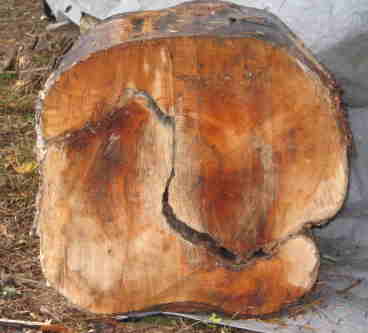![]() Observation: The First Step in the Scientific Method
Observation: The First Step in the Scientific Method
To observe means to look at something carefully and to notice the details. When people observe things they often wonder why it is that way. Scientists work to answer that question. They make observations as the first step to the scientific method.
Observations are also called data. There are two kinds of data.
Qualitative data are descriptions that do not have numbers.
The massive white oak tree is the largest object in town, is an example of qualitative data.
Quantitative data are obtained by measuring and have numbers. Scientists use instruments (tools) to obtain numeric data.
The students used proportion, shadows and their math skills to find that the tree's height is 150 feet. They also found that the trunk circumference is 195 inches (4.95300 meters) and it has an average crown spread of 94 feet (28.65 meters). This is quantitative data.
Practice observing by looking at this photo. I saw this oddity in my woodpile on 10/25/2008 at 1115 GMT.
Click here for a closer view. Use the Back Button of your browser to return to this web page.
1. Write your observations.
2. Imagine - If you were standing in the scene:
What tools (instruments) might you use to measure what you are observing?
3. Fire up your imagination or curiosity. Write a 3 questions about what you have observed.
4. Theorize - What caused this tree trunk to form this way?
How could you test your theory?
"A good deal of science is observational and descriptive." National Health Museum, Writing Hypotheses
Explore more:
About Units of Measurement - IB Biology | Observing Biology how to's
Temperature facts and figures - IB Biology | Writing Hypotheses
Steps of the Scientific Method - Science Buddies | Learn about the Scientific Method
Trees Facts Hunt | Plants Facts Activity | Winter's Story | Bluebirds Project
![]()
All trademarks, copyright and logos belong to their respective owners.
Internet Hunts / Nature / Water Studies / Computers / Famous Pennsylvanians / Civics / Puzzles & Projects / Site map / Home
FAQ Posted
by Cynthia J. O'Hora 3/2009, released for noncommercial use by nonprofit organizations
Aligned
with Pennsylvania Academic Standards | Assessment and Rubrics
![]() Save a tree - use a Digital Answer Format - Highlight the text. Copy it. Paste it in a word processing document. Save the document in your folder. Answer on the word processing document in an easily read, contrasting color or font. (Not yellow ) Avoid fancy fonts like: Symbols, Techno,
Save a tree - use a Digital Answer Format - Highlight the text. Copy it. Paste it in a word processing document. Save the document in your folder. Answer on the word processing document in an easily read, contrasting color or font. (Not yellow ) Avoid fancy fonts like: Symbols, Techno, ![]() fonts). Save frequently as you work. I have never liked losing my work. You will not like it either. Be sure to enter your name & the date at the top of the document. Submit via email attachment or class dropbox. Bad things happen: Save a copy of the response document for your records.
fonts). Save frequently as you work. I have never liked losing my work. You will not like it either. Be sure to enter your name & the date at the top of the document. Submit via email attachment or class dropbox. Bad things happen: Save a copy of the response document for your records.
Proof your responses. It is funny how speling errors and typeos sneak in to the bets work. ![]() Make your own printer paper answer sheet
Make your own printer paper answer sheet
